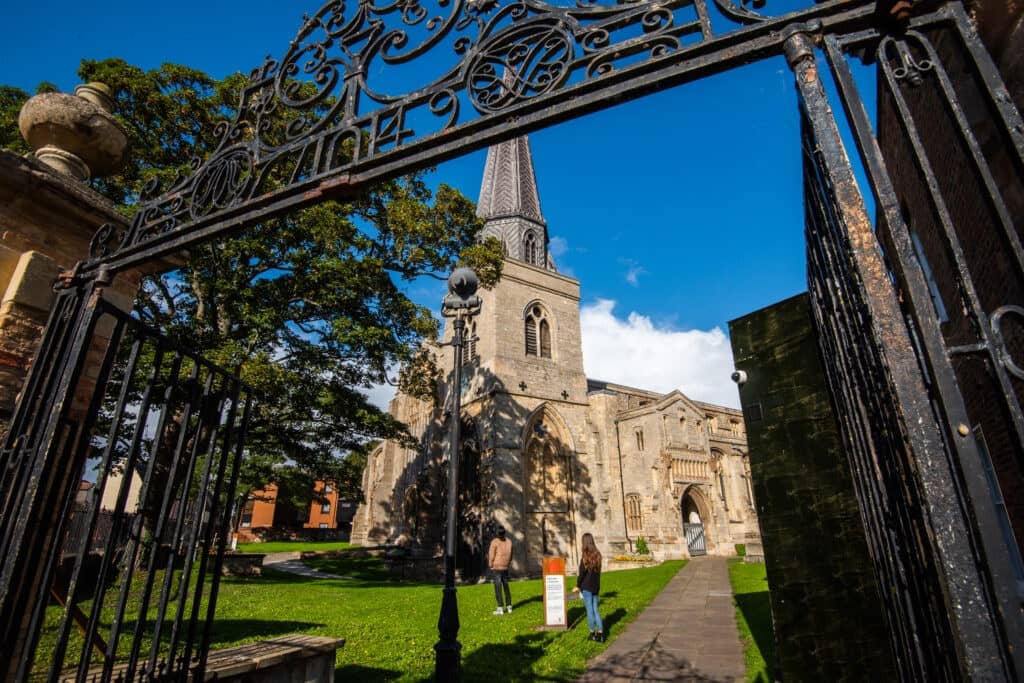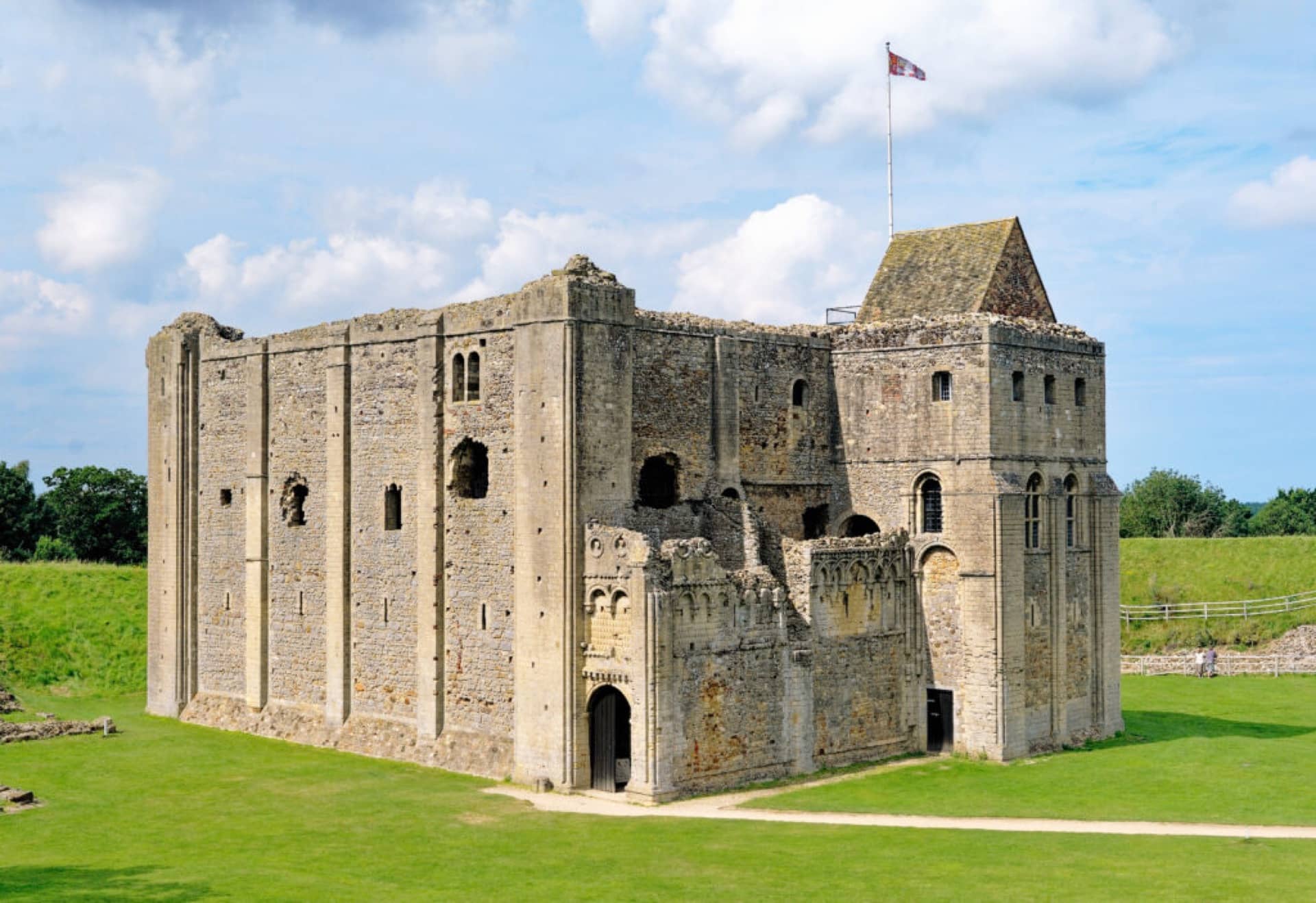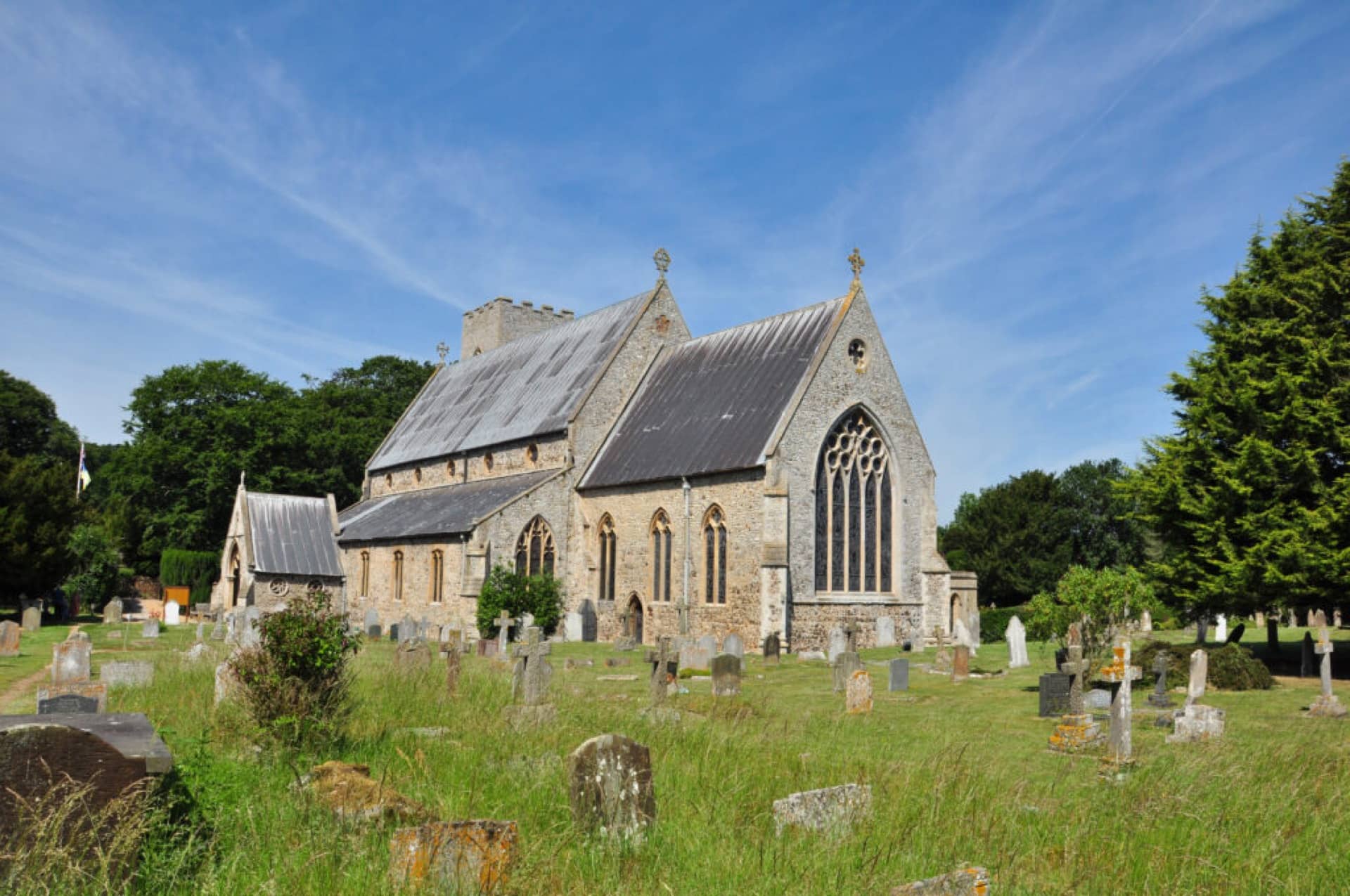
The Chapel of Angels and Fishermen
The grey-blue spire of St Nicholas, patron saint of sailors (and, as Santa Claus, of children) has soared to the sky above Lynn for over nine centuries. This radiant town centre chapel is the largest in England, full of stories illustrating King’s Lynn’s long history as a busy commercial port and some darker tales, for it’s reputed the ground along the path is high due to the number of plague victims buried beneath. The carved woodwork is of such quality that some is now in the V&A Museum. In the fifteenth-century wooden roof, carved angels sing with wings outstretched, while in the medieval stalls strange cavorting figures suggest an older faith.
Situated in what was once ‘Newland’, St Nicholas was known as the Fishermen’s Chapel, spiritual home for the North End fishing community. The fine Christian folk of the town sniffed at sitting next to rough dressed fisherfolk so a pew system prevented anyone of low status sitting in the front seats. One hopes the good Lord gave special attention to the people at the back.
When the chapel was reseated in the 1860s, Canon Wodehouse announced a new service, opening the whole chapel every Sunday evening, ‘when old dresses and thread-bare coats would come perhaps with less restraint’. This achievement led to what in 1868 was described as ‘the largest congregation in town, fishermen may be seen in their white and blue slops, and they confess…it is the happiest day of the week.’

Rising Chase
Castle Rising emerges from the Norfolk landscape brimming with ancient tales of royal scandal and political intrigue. Sited on impressive earthworks, this famous 12th century Norman fortification was once home to the She-Wolf, one of the most notorious queens in history. Isabella of France, spurned wife of Edward II, briefly took the throne with her lover, forever suspected of her husband’s brutal murder. Eventually her son, teenage King Edward III, had his mother’s lover hanged and Isabella put under (rather luxurious) house arrest at Castle Rising. Families eh?
The Great Hall once saw nights of feasting, hounds jostling for scraps under tables laden with venison, roasted swan and peacock, pastries, cheeses, fruit, honey and er…turnips. Well what did you expect in the Middle Ages, smashed avocado? Meat was cut with daggers and eaten from greasy fingers washed in water scented with lavender, hyssop, sage and roses while minstrels and jesters entertained guests as the stone walls flickered with firelight.
Climb the castle mound for magnificent 360° views. Imagine the rising of the sun and the running of the deer, for once a great hunting chase, the preserve of the nobility, circled these fields. Its traces are still imprinted on the land today.
On stormy nights, it’s said the wild laughter of the long dead She-Wolf is still heard howling in the wind as her ghost stalks the church ruins, clutching the beating heart of her murdered husband.

The Revenue Mans Lament
In the quiet churchyard of St Mary in Old Hunstanton, seek out the graves of two ‘honest officers’ of the government. William Webb was ‘shot from his horse’ and ‘poor’ William Green ‘inhumanely murdered by a gang of Smugglers’ in 1748. Allegedly, the gang’s guilt was beyond question, yet a local jury found them innocent. Furious, the thwarted prosecuting counsel tried the smugglers a second time. And again the jury cried ‘innocent’. So…was this coastal community intimidated into silence or were they (whisper it) complicit?
After all, who was most familiar with the inlets of Norfolk’s tidal creeks or knew secret paths on moonless nights? Which farmer might have lent a horse, provided a storeroom, hidden a key? Who were the ‘tubmen’, hauling contraband miles inland? And whose wealth provided the capital for these illicit ventures? How did the draper afford that fine silk or the parson get such cheap tea? Is it surprising the squire preferred his wine duty free? In a tight-knit, and even tighter-lipped community, it seems no-one was telling.
Here’s a clue to local loyalties; in 1822, revenue officers impounded 80 tubs of contraband at nearby Snettisham. Over 100 people armed with bludgeons and rifles rocked up to seize it back. Clearly Norfolk’s smugglers had determined support.
The idea of buccaneering free traders is certainly romantic, but also deadly. In an age when punishing taxes often left rural populations on the edge of starvation, which side would you have been on?

For King and Country
As you explore the peaceful church at West Newton, look for a beautiful Arts & Crafts stained-glass window commemorating Captain Frank Beck and ‘E’ Company, 5th Battalion Norfolk Regiment. Formed in 1906, the company was made up of gardeners, farm hands, grooms and household staff from the King’s estates. These men grew up together, drank beer and played cricket on summer afternoons, never dreaming they were destined to become one of the First World War’s strangest legends. On 12th August 1915, far from home under the blistering Gallipoli sun, the men of the Sandringham Estate marched into a barrage of machine gun fire. “On the Norfolks, on” shouted Frank Beck, as the Sandringhams charged forward into the smoky mist…and disappeared. No bodies were found, no prisoners were taken. They had simply vanished.
Perhaps to spare their families’ pain, some said they’d been transported straight to heaven, but at the request of Queen Alexandra, in 1918 the War Graves Commission searched the sunbaked battlefields and found a Norfolk Regiment cap badge. Later, Rev Charles Pierrepoint Edwards, ‘The Fighting Parson’, discovered 122 bodies, each with a single bullet wound to the head. There’s little doubt the Sandringham men were captured and executed. So take a moment to remember those doomed sons of Norfolk and the terrible grief of quiet villages they never saw again. And if you’d like to know more, Frank Beck is beautifully played by David Jason in the moving BBC drama All the King’s Men (2005).
Build your own itinerary
If you fancy creating your own itinerary for a day trip to Norfolk or a longer visit, it couldn’t be simpler. Just go to Search Activities and select from our wide range of free and paid-for experiences, saving any that capture your imagination with the click of a button.
Once you’ve finished, you’ll find all the information stored in My Favourite, where you can drag and drop activities to create your own day-by-day itinerary! You can download this to a calendar and even share it with friends.
